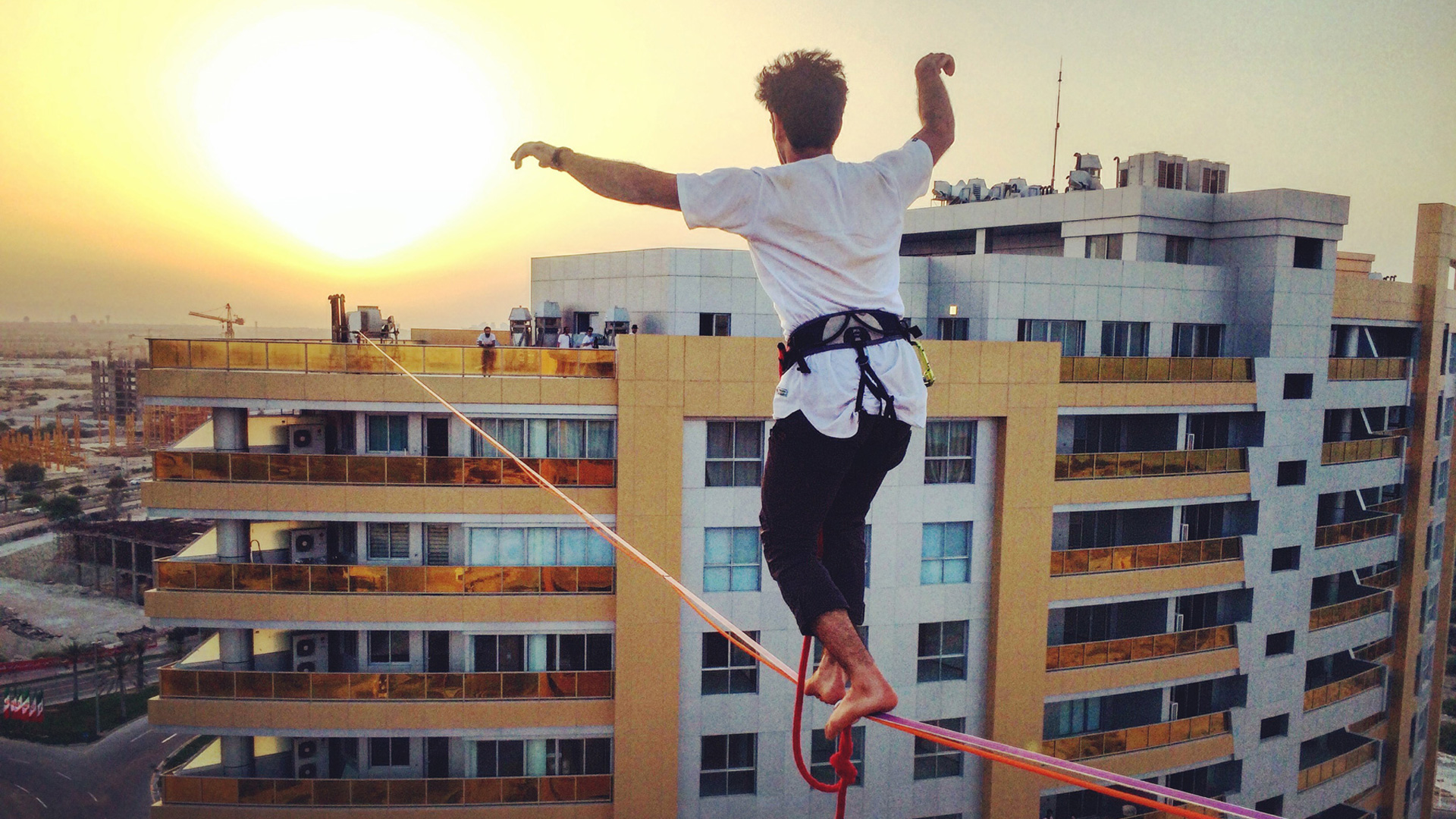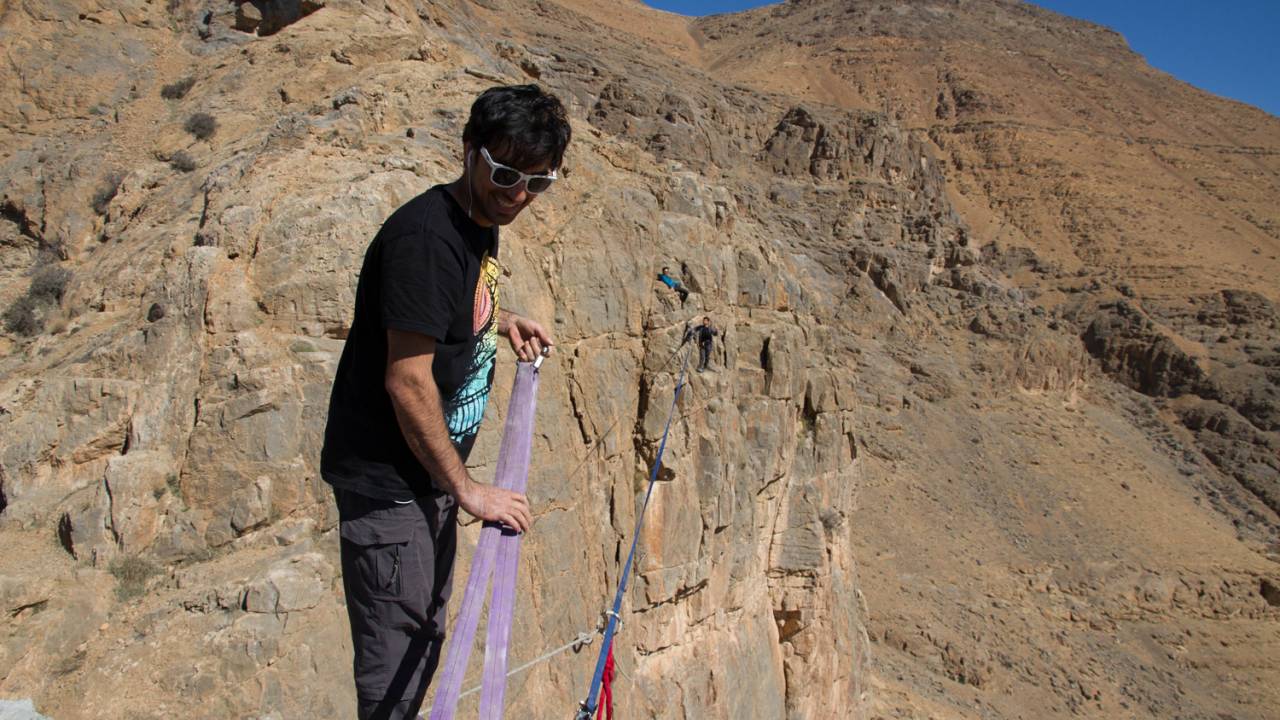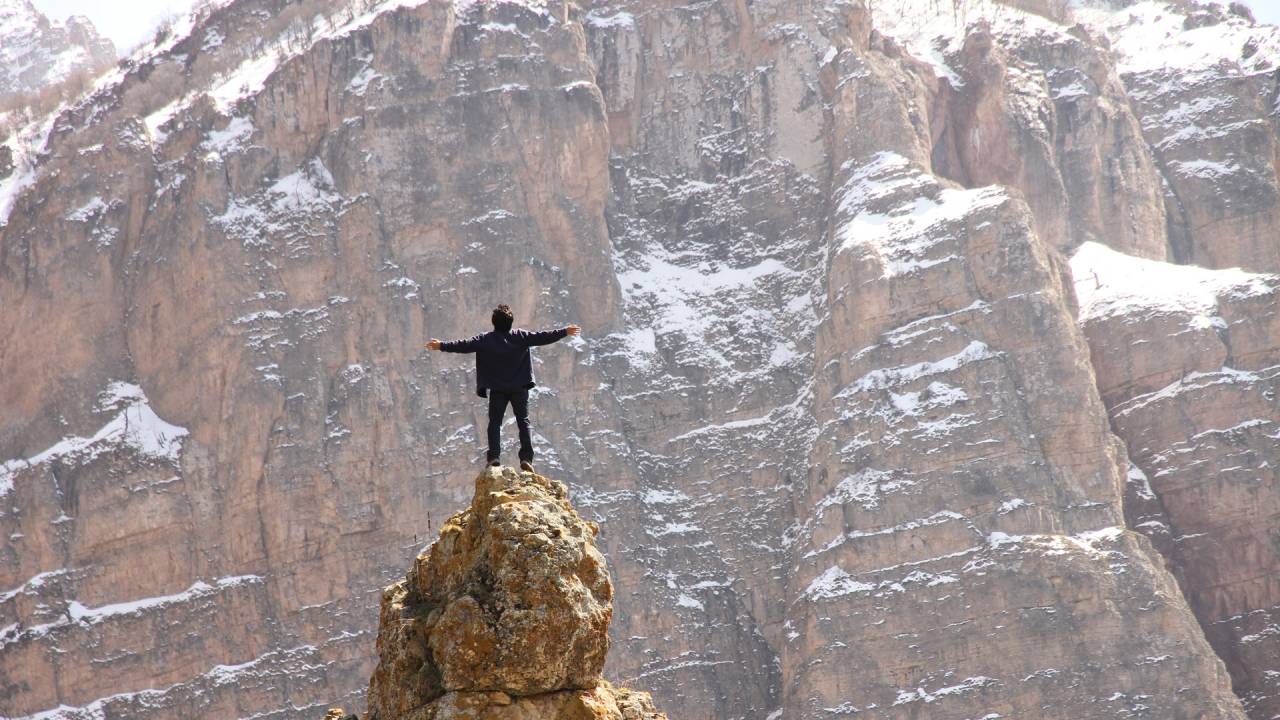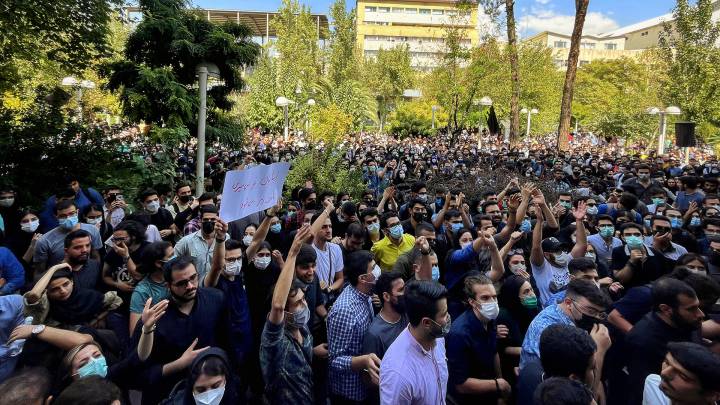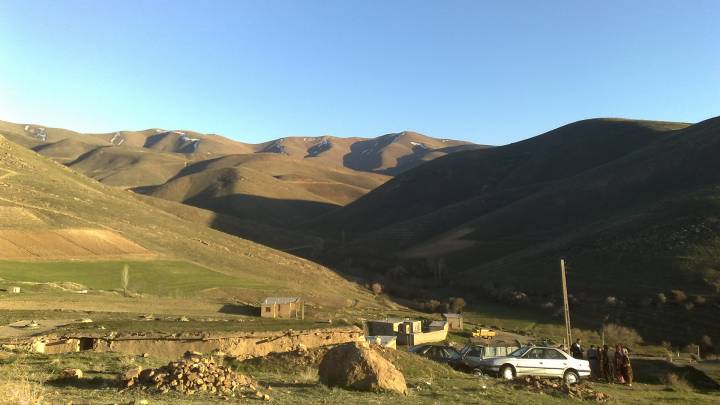For a few Iranian extreme athletes, each abyss is a new challenge waiting to be conquered only with thin ropes and their sense of balance. For slackliners, the lofty heights offer an escape from the strict rules that dominate their ordinary lives.
Mohammad Reza Abaee revs the engine as loud techno music blasts from his car’s speakers. His best friend Klavash leans out the window and cries out with excitement, the wheels stirring up ochre-coloured dust. Sandy air fills the car through the open windows as the smoke of the passengers trails out. Mohammad and his friends are on their way to reach new heights.
What is slacklining? A slackline is a type of webbing tensioned between two anchors, made out of nylon or polyester fabric enabling the athlete to perform various tricks. In 2015, German professional slackliner Alexander Schulz managed to walk a 610-metre slackline in China.
“For a brief moment, all my fears and worries disappear when I am standing on the highline. My head feels clear and free.” Abaee’s eyes go bright when he speaks about slacklining. To him, life in his home country of Iran is full of difficulties, defined by restrictions and rules on how to behave. A feeling of constantly being controlled and observed, wherever you are. The government is omnipresent, ready to punish any violations of its rules. There’s hardly any space to mould your own life, except in nature. “That’s why Iranians love the mountains so much,” says 24-year-old Abaee, who has dedicated his life to the outdoor sport.
Today the group has ventured so far away from their home town of Arak that they have reached the end of the asphalted road and are forced to travel on a bumpy dirt road. The barren landscape is dominated by a wide, desert-like area made out of rugged rocks, surrounded by pale mountain scapes. Nearly a dozen mountain peaks in Iran top the 4,000 metre mark, and the country’s snow-covered mountaintops attract winter sport athletes – and now slackliners.
“Over there is where we will climb,” says Abaee as he points to a pinnacle rising steeply in front of a mountain massif. In between, a 50-metre drop looms. We have arrived on Mohammad’s playground, as he lovingly refers to this location near the mountain village of Enjedan. Mohammad and his friends venture to this spot as often as they can.
Sport gives us a chance to step beyond the boundaries and limitations that we are born with as Iranians.
While slacklining has become increasingly trendy in Europe, it hasn’t been around in Iran for too long. Since 2009, a small community interested in the sport has formed around Mohammad, who found out about slacklining by watching a movie online. He was instantly thrilled: “I immediately grabbed a climbing rope and went to the park with my friends.” He still remembers their expressions of disbelief vividly as ¬– much to their shock – he managed to hold his balance along the rope. Soon after, he created the first group dedicated to slacklining – Iran Slackline. Using ropes they crafted themselves, the students practised their skills in backyards and parks while being chased away over and over again by police or other guardians of public morals. But Mohammad and his friends didn’t give up, persisting to make the sport popular and fighting for their right to practise in public spots, like in the inner city, even balancing from one rooftop to another. Their efforts were rewarded by several small victories, such as children being allowed to try out a slackline at a festival in the city or a highline between two skyscrapers being formally approved.
"It gives us an opportunity to connect with other people of our age and simply have fun,” Abaee says while reminiscing about his first highline experience, made possible by a group of French slackliners. In 2012 they received an invitation to the climbing festival in Bisotun from the Alpine Club of Iran and brought all the necessary equipment along. “I will never forget how good this first real slackline felt underneath my feet. I just started walking, until I reached the mountain ledge on the other side.” Impressed, the French slackliners made him a gift of some of their equipment.
The event was a stroke of luck for Abaee, because the materials necessary are rare in Iran. To avoid inevitable problems at customs, Abaee and his friends have resorted to making most of the equipment needed themselves. From necessity, Abaee and his friends came up with the idea of producing professional slacklining equipment that they could distribute within the country to give athletes easy and cheap access to the materials needed.
Furthermore, they want to create a space for young people to get together to train and plan excursions. To make their project become a reality, they rented a building in their home city that they are renovating and developing to host a slacklining school. “You can only achieve something here by relying on your contacts. Without them, you are lost and have no chance in creating a new enterprise, let alone one that is suspect to the local authorities,” he says.
It’s a tedious process, and yet one the friends have their hearts set on. “This project is an important one – not just for us, but for Arak. This grey city could use some spots in which you can be creative and free.”
